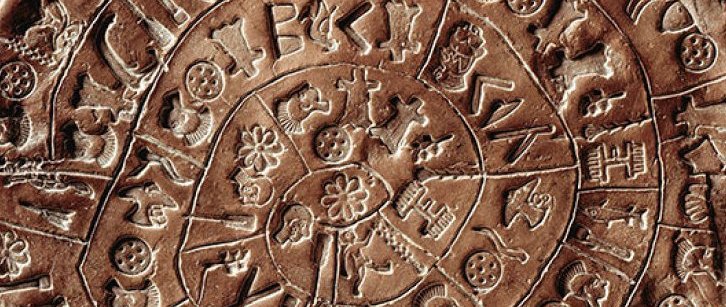
The Disk of Phaistos
The Phaistos Disk was found 3rd of July in 1908 at the ruins of the First Minoan Palace of Phaistos in Crete, Greece. The exact date of the disk is uncertain, but it probably dates from the MM IIB period (17th century B.C.). It was made of clay, its average diameter is 16 cm and it is 2.1 cm thick. Its mysterious inscription constitute 242 signs, 123 on side A and 119 on side B, in spiral order. There appear 45 distinct signs (with repetitions). The 45 different signs were actually impressed on wet clay and then the disk was fire-hardened. The signs probably belong to a Cretan syllabic script, which has not yet been deciphered despite the numerous attempts over the years, using the most diverse methods of study. Researchers have proposed widely diverse speculations about the purpose, the contents of its inscription and its creators.
This has made the Phaistos Disk a real challenge for archaeologists and this is the reason why this certain Disk has been chosen by the Foundation for Research and Technology - Hellas (FORTH) as its symbol, because it expresses exactly the same challenges that the scientists encounter every day during their research. And this is the essence of science.








